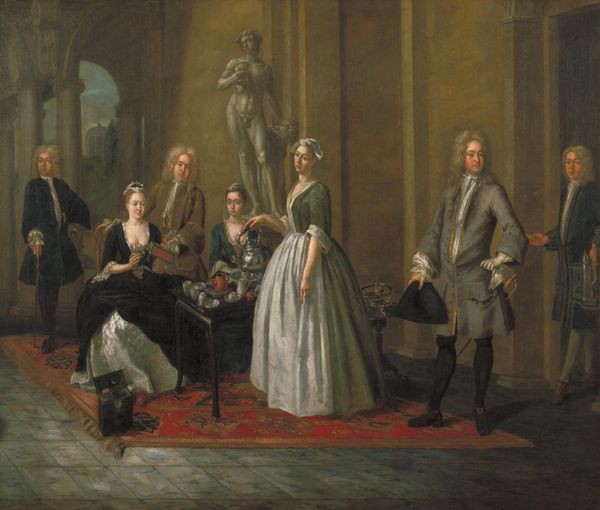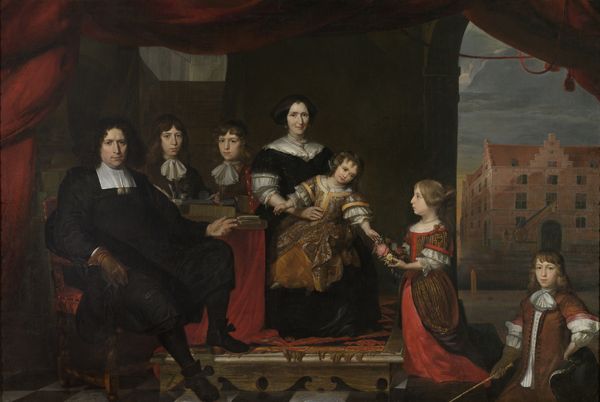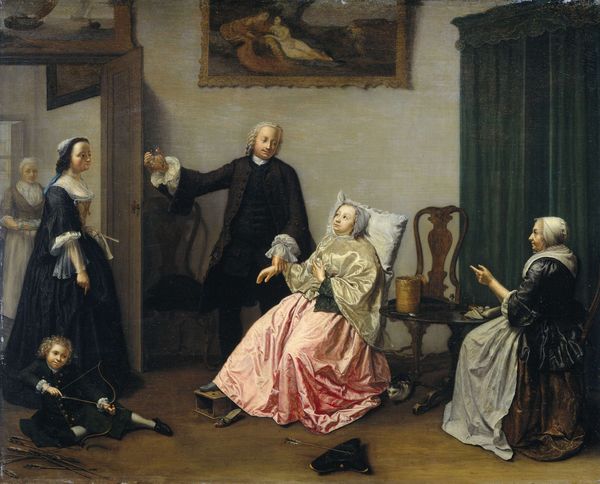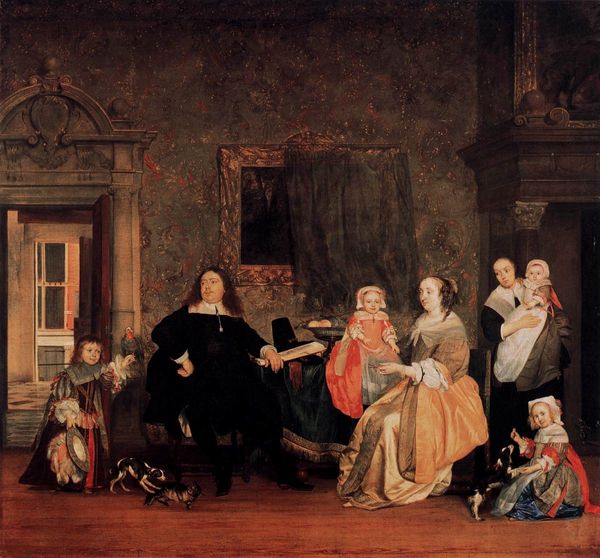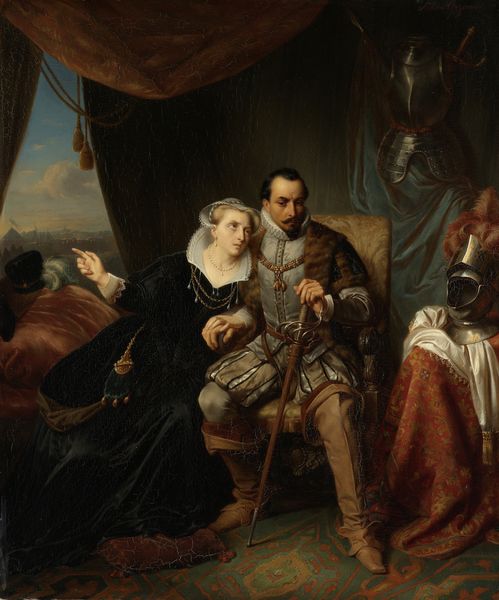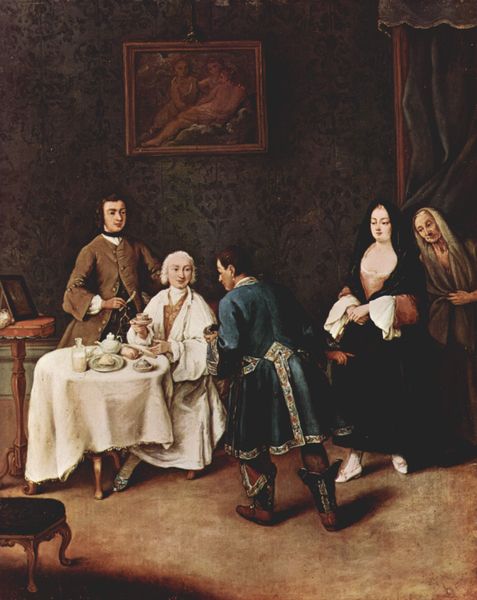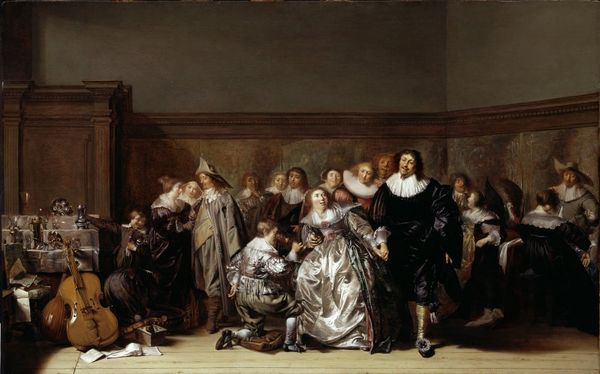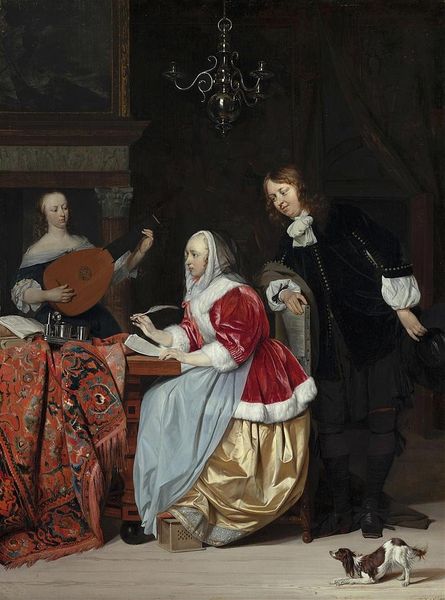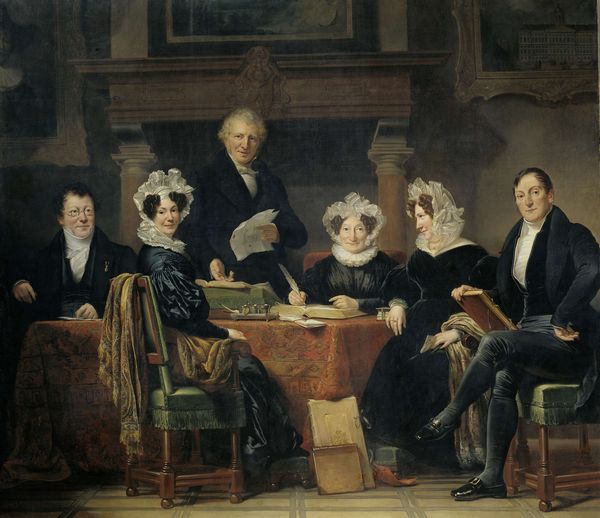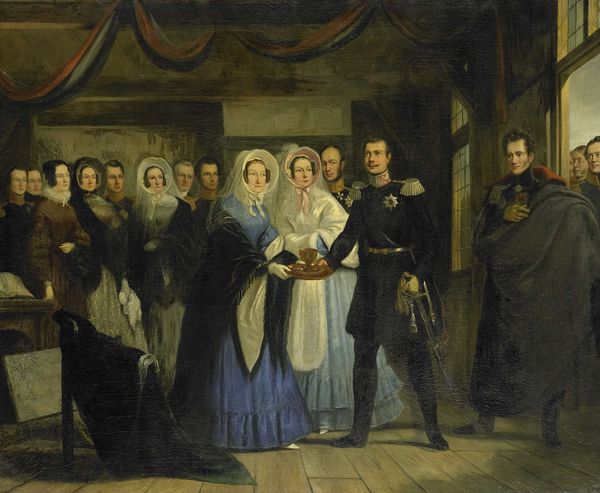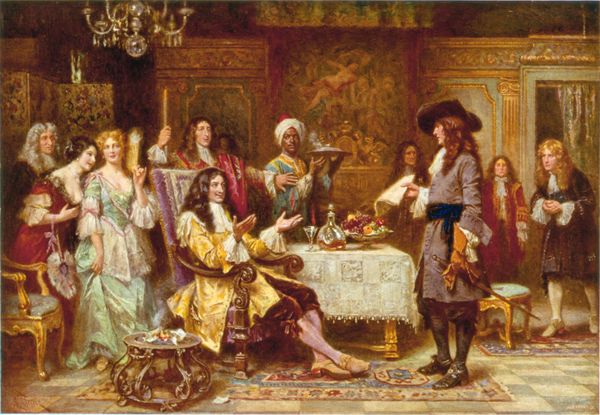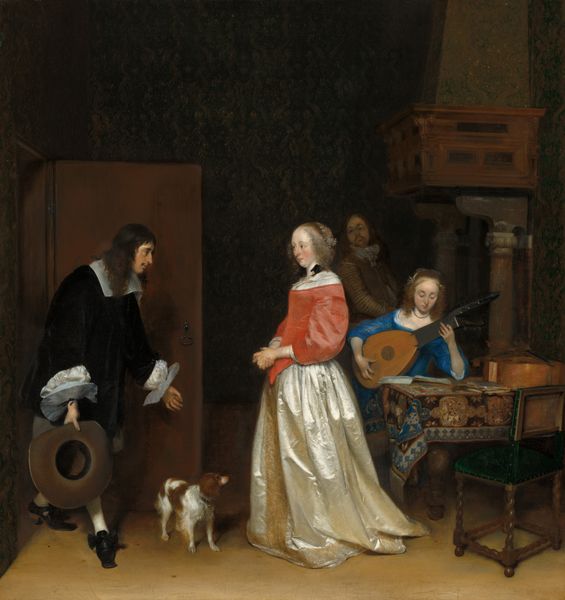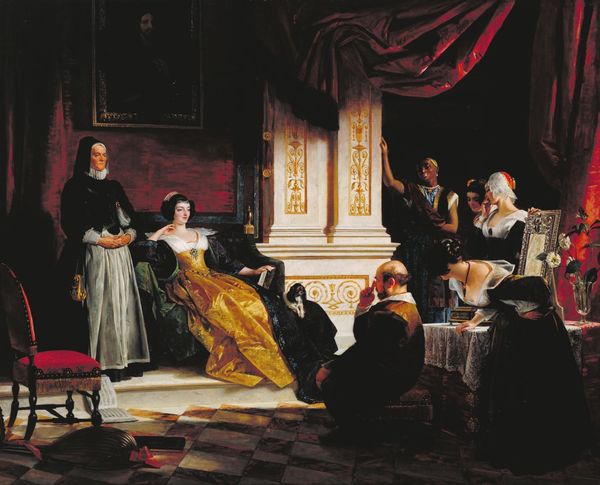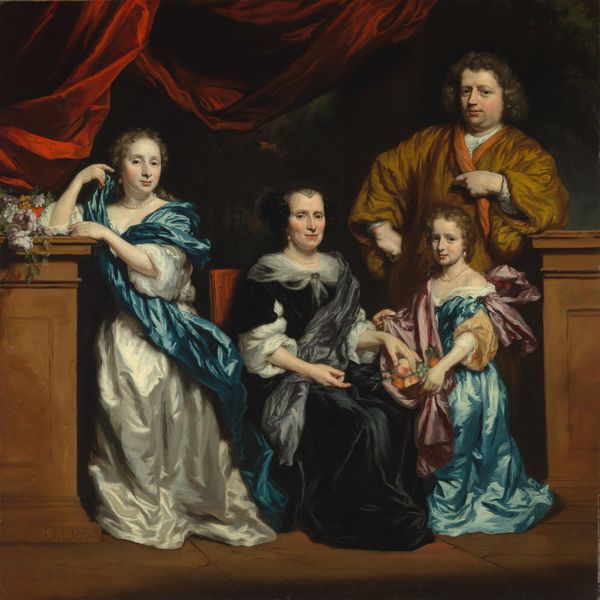
The Princess of Orange Visiting the Work-shop of Bartholomeus van der Helst c. 1850 - 1870
0:00
0:00
hendrikjacobusscholten
Rijksmuseum
#
imaginative character sketch
#
character portrait
#
character art
#
character design for game
#
3d character model
#
character sketch
#
game character design
#
underpainting
#
costume
#
watercolor
Dimensions: height 46 cm, width 59 cm
Copyright: Rijks Museum: Open Domain
Editor: So, here we have Hendrik Jacobus Scholten’s "The Princess of Orange Visiting the Workshop of Bartholomeus van der Helst," dating from around 1850 to 1870. The scene feels rather staged, a carefully constructed glimpse into a supposed historical moment. What do you see as the artist's purpose in recreating this scene? Curator: Well, this painting invites us to consider the role of historical narratives and the construction of national identity. This imagined encounter seems less about historical accuracy and more about creating a legitimizing myth for the monarchy during the 19th century. We might ask ourselves: whose story is being told, and for what purpose? Editor: So it's less about what *actually* happened and more about crafting an image of power? The artist chose *this* scene for a reason, it feels performative in a way. Curator: Precisely. Notice the emphasis on luxury – the opulent fabrics, the composed poses. These visual cues reinforce a particular idea of nobility and cultural authority. How might the workshop setting contribute to this constructed narrative? Editor: It almost seems to be saying, "look at our refined arts, part of the Orange legacy, of course!" There’s a conscious association being made, intertwining artistic achievement and royal patronage. But is it authentic, or simply propaganda? Curator: That tension is key! The painting becomes a stage where power relations and cultural values are negotiated. Perhaps Scholten is not just depicting history but actively shaping its perception for a contemporary audience. This raises questions about how we engage with historical representation and question its intentions. What are your thoughts? Editor: This has reshaped how I see the painting. Now it’s less a pretty picture, more a calculated statement, making me think about representation of historical events. Curator: Exactly! And this work’s conversation around power continues resonating with urgent contemporary discourse and issues around propaganda, representation, identity, and the selective ways in which the past is presented and consumed.
Comments
rijksmuseum about 2 years ago
⋮
Mary Stuart, the widow of Stadtholder William II, looks at her portrait in the workshop of the 17th-century painter Van der Helst. In the background is his unfinished monumental painting Banquet of the Civic Guard, in which the militiamen celebrate the end of the Eighty Years’ War. For his likeness of the princess, Scholten relied on an existing portrait, also by Van der Helst. Scholten thus demonstrated his knowledge of both 17th-century Dutch painting and national history.
Join the conversation
Join millions of artists and users on Artera today and experience the ultimate creative platform.
